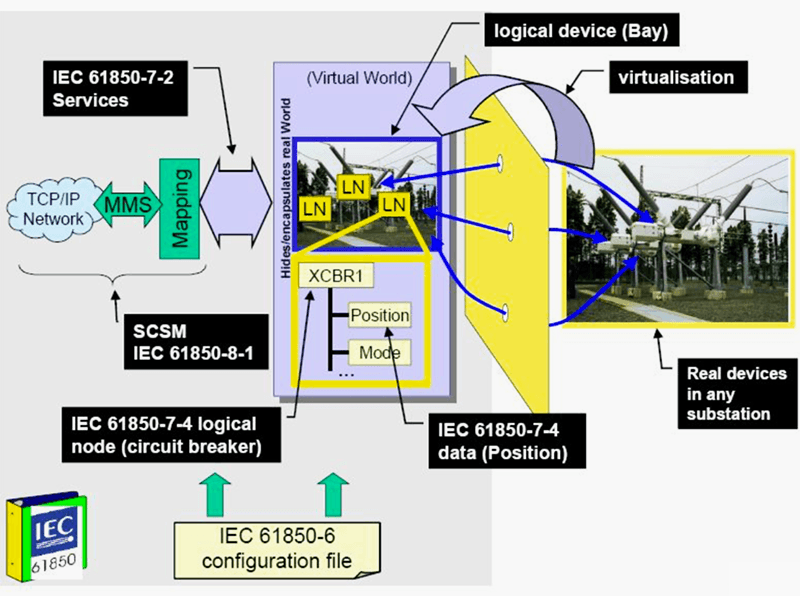Substation Automation
In many areas of engineering, interoperability is a goal when technical systems are designed. This is true also for the domain of electrical engineering and in particular for substation automation systems. The IEC61850 standard addresses this challenge and is the focus of this thesis.

The thesis analyses the IEC61850 standard and gives an overview of its content. The analysis places the Brodersen RTU32 in relation to the scope of the standard. A basic IEC61850 server is designed and implemented for the RTU which runs under Windows CE.
The system consists of an information model and an information exchange model and is capable of basic client/server communication.
Basic services, such as reporting and logging are implemented which allow a client such as a SCADA system to review historical data for a substation and receive reports based on events in the substation.

An SCL parser is included in the implementation which allows a substation to be configured according to the SCL configuration file format defined in the IEC61850 standard.
IEC 61850
Substation automation is essential in order to maintain an efficient and reliable electrical infrastructure. The IEC61850 standard is developed to make this automation interoperable and cost-efficient.
The IEC61850 standard has a number of benefits compared to previous standards which are often referred to as legacy standards.
These can be described as ’artifacts of the eigthies’ – the time in which many of them were developed. The communication protocols of these legacy standards were developed for serial link technology and were later adapted to run over TCP/IP-Ethernet.
From the start, one of the objectives of the legacy protocols was to account for bandwidth limitations by minimizing the number of bytes sent. Many of these protocols were proprietary and thus communication between devices from different vendors was generally not possible.
Compared to legacy standards, a few of the specific benefits of the IEC61850 standard include the following features:
- Every element of data is named using descriptive strings whereas legacy proto- cols often use storage location and register numbers to identify data
- The communication protocol supports GOOSE3, GSSE4, SMV5 and many other services not supported in legacy protocols
- The standard includes a standardized configuration language for substations, SCL6, which uses XML7 files for the configuration of a device and removes ambiguity issues in previous standards
- The use of GOOSE and GSSE over LAN8 removes the need for wiring separate links for each relay, thus lowering installation costs
- The use of a single merging unit supporting SMV lowers transducer and maintenance costs
- Less manual configuration is needed for client applications and devices, reducing errors and lowering commissioning cost.
| Title: | Analysis And Implementation Of The IEC 61850 Standard – Eirik Hammer, Eilev Sivertsen (Master’s Thesis) at Technical University of Denmark, DTU |
| Format: | |
| Size: | 2.1 MB |
| Pages: | 104 |
| Download: | Right here | Video Courses | Membership | Download Updates |



Hello
I am electrical engineer in Asia and i working on Electrical protection relays but my knowledge is low in this matter and also i want to know something about Automations in Substation or Electrical system. Please guide me. Thank you so much.
Mojtaba Malekdar
us what you’re thinking… we care about your opinion
I AM POWER ENG FOR OUR CUNTREY AM INTRESTED TO YUOR SYESTEM